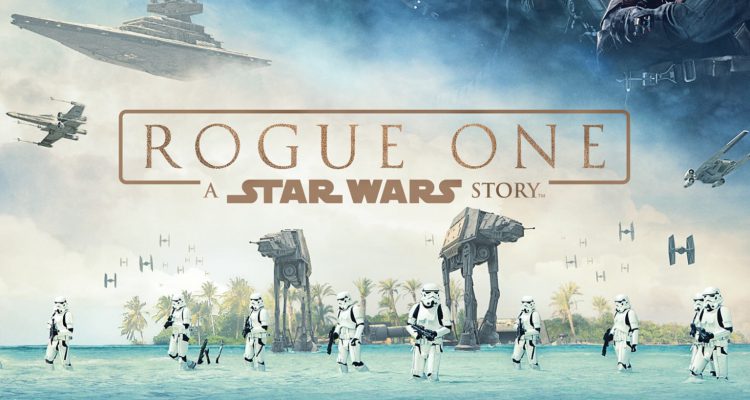In 1977, the original “Star Wars” was released — an instant hit, featuring the well-known plot of the fight between good and evil. The Rebel Alliance against the Empire, the “Light” versus the “Dark.” The theme was shown in nearly every part of the film, from the costumes — where protagonist Luke and Leia wore white robes while antagonist Darth Vader was encased in a black mechanical suit to the colors of the light sabers the menacing red of Vader’s compared to Luke’s sky blue. The fight between good and evil continued throughout the franchise, appearing again in “Star Wars: The Force Awakens” (2015) through the characters of protagonist Rey and antagonist Kylo Ren. That all changed in “Rogue One.”
In a startling addition to the franchise, “Rogue One: A Star Wars Story” took a different viewpoint and featured the darkest of greys the “Light side” could offer. The film showed the assassins, the interrogators, the double agents, the spies and the betrayers. The people who are either discussed in raised voices or quiet whispers- the people who do the work the Light side does not want to admit to, but that must be done to prevent more casualties. The film tells the story of how Princess Leia and the Rebel Alliance acquired the plans to destroy the Death Star. It is not a story for children and it does not have a conventionally happy ending. That’s not to say it isn’t an amazing film.
The first half an hour of “Rogue One” was slower in comparison with “Star Wars: The Force Awakens.” The story seemed stunted, the characters seemed typical and the plot seemed like it was going to be a repeat of previous films in the franchise, but with no interesting twists and characters to make it stand out. Then the story began to take surprising turns, completely separating from what most people expect from the typical heart-warming “Star Wars” film. These twists begin when Emperial scientist Galen Erso (Mads Mikkelsen) — the father of protagonist Jyn Erso (Felicity Jones) — begins working as a double agent for the Rebels without either side’s knowledge. To do this, he becomes the lead engineer in the construction of the Death Star. While the Rebels believe that he has turned to the Dark side, Galen so completely convinces the Empire that he is acquiescing to their wishes that they do not even suspect him of building the Death Star with a hidden vulnerability so that the Rebels can defeat it or of being the one to betray the Empire through defecting Empire fighter pilot Bodhi Rook (Riz Ahmed). Then the grey starts to show: Bodhi Rook, a defecting Emperial fighter-pilot, is tortured by Rebel extremist Saw Gerrera (Forest Whitaker) to test if the message he bears is true. Captain Cassian Andor (Diego Luna) strikes a deal with Jyn so that the Rebels can meet with Gerrera while she earns her freedom, but is also given orders by the apparent Light side to assassinate Jyn’s father. Later on, it is revealed that there is an entire group of Rebels who have jobs such as these, where they murder and have to sacrifice innocent lives to keep the Rebels one step ahead of the Empire.
The final twist is shown at the conclusion of the film with the death of all of the protagonists. The motley group — the majority of whom are criminals, assassins, betrayers and spies — make up the darkest of grey the Light side has to offer. They have all done horrible things and when the rest of the Rebels wanted to quit, it was this group that continued on, engaging in a suicide mission in the hopes that all of their sacrifices would not be made in vain. When everyone else turned and ran, they knew that they could not live with themselves if they did the same, so they chose to fight. They got the plans to the Rebels, dying in the process and the film closes on Carrie Fisher’s character of Princess Leia as she receives the plans for the Death Star’s destruction and repeats the film’s meaning: hope.
Moving past the plot, “Rogue One” utilized many advanced editing techniques to revive old characters for short scenes throughout the movie. Two of the most prominent examples of these are through the appearances of young Princess Leia and Grand Moff Tarkin. Grand Moff Tarkin, originally played by Peter Cushing, was needed in various scenes throughout “Rogue One,” but due to Peter Cushing’s aging and resulting death that seemed impossible. The same seemed to be true for the creator’s want for an appearance of a “young” version of Princess Leia to show the full-circle effect of “Rogue One” ending as “Star Wars” began. To make these character appearances possible, the role of Grand Moff Tarkin was re-cast by Guy Henry — who wore a CGI mask during his scenes — and while the resemblance was not exact, it bore enough of a resemblance that the character was easily recognizable. In the case of Carrie Fisher’s Princess Leia, a mix of techniques were used including the use of edited original footage, an original voice recording and the use of various CGI techniques on filming double Ingvild Delia during a manipulated portion of the scene.
“Rogue One” is not a science fiction movie with yet another fantastical plot. It is a film that shows that not everything can be labeled good and evil with a single glance and that a victory does not always mean a happy ending. It was also a step into the future of science fiction and cinema, using revolutionary techniques to return old faces to the screen when to do otherwise would be greatly frowned upon.


Leave a Reply